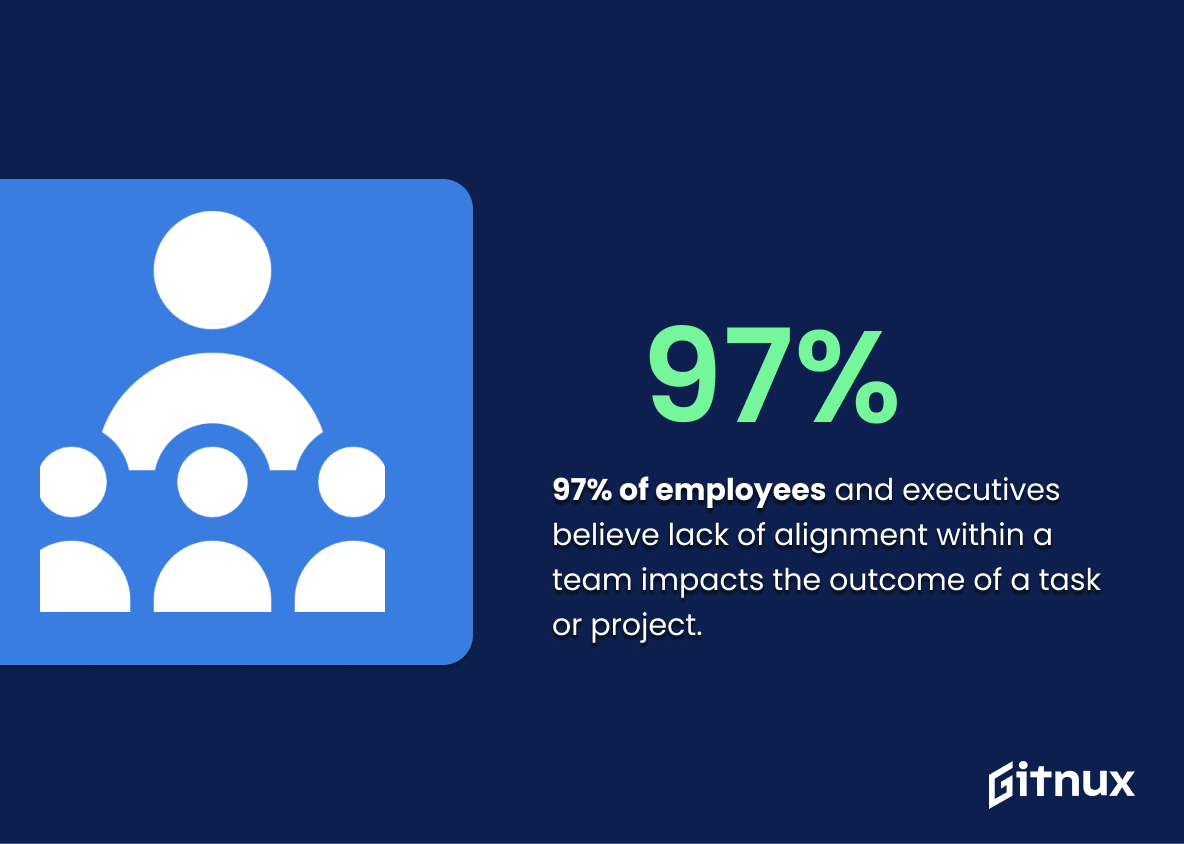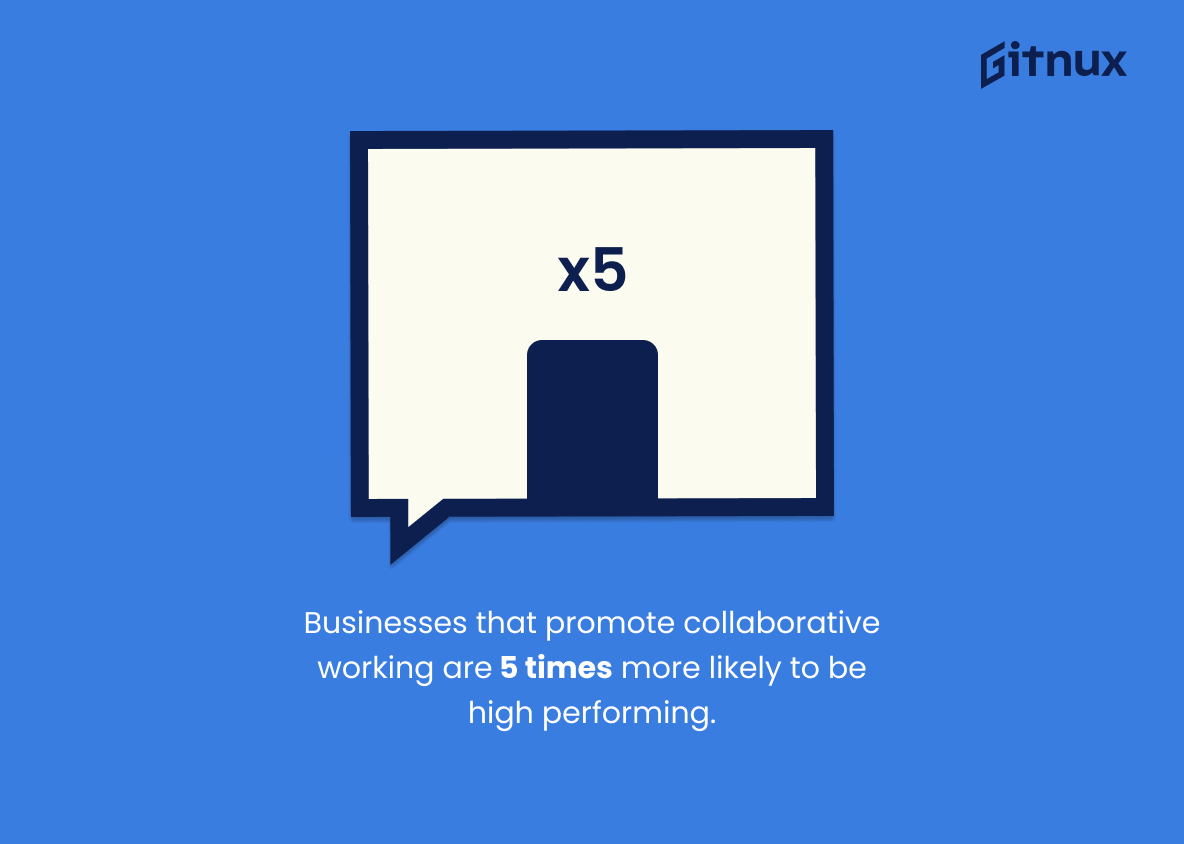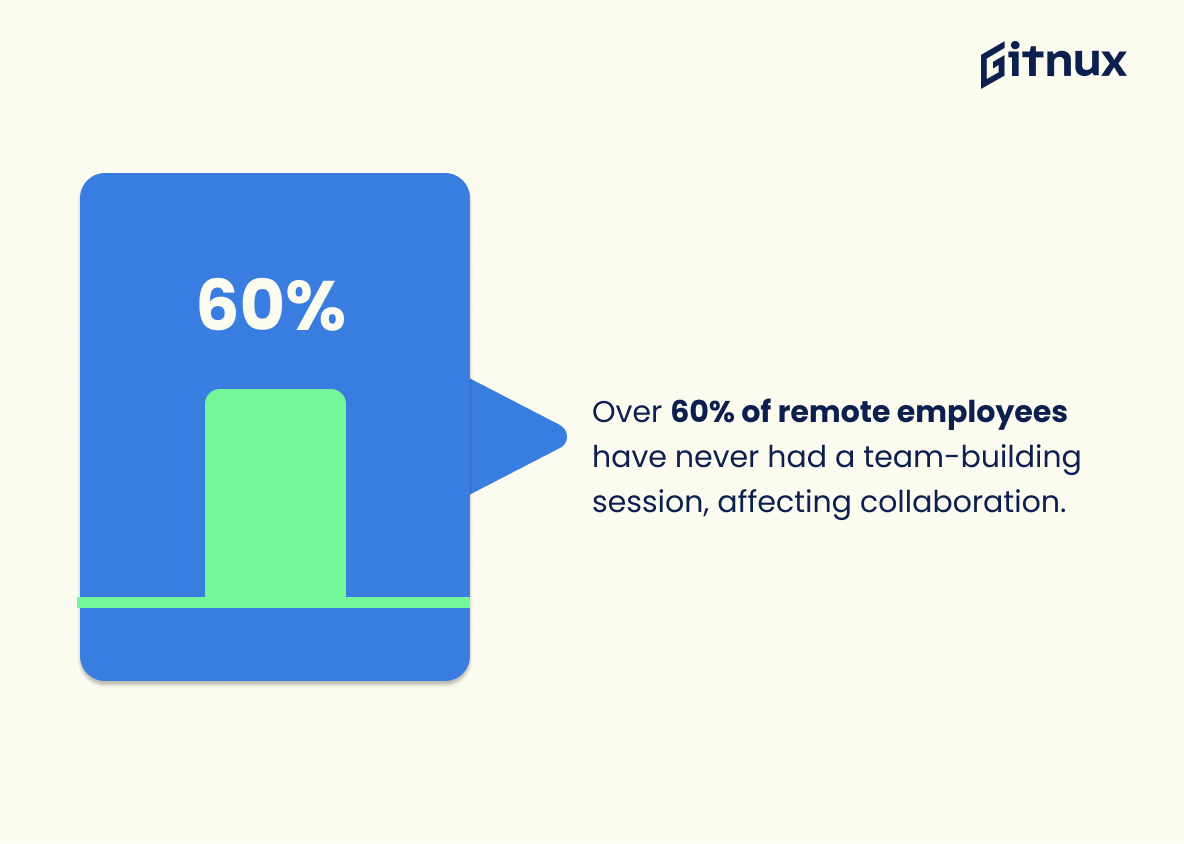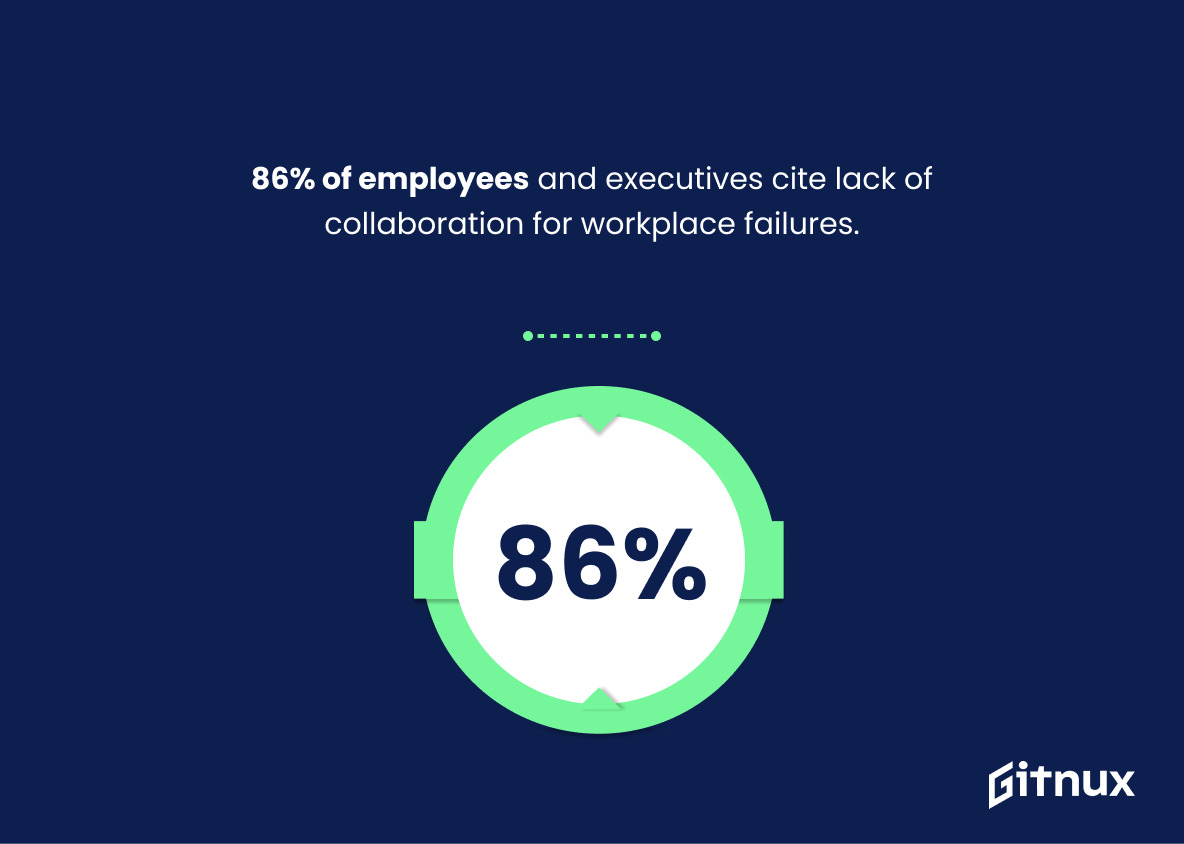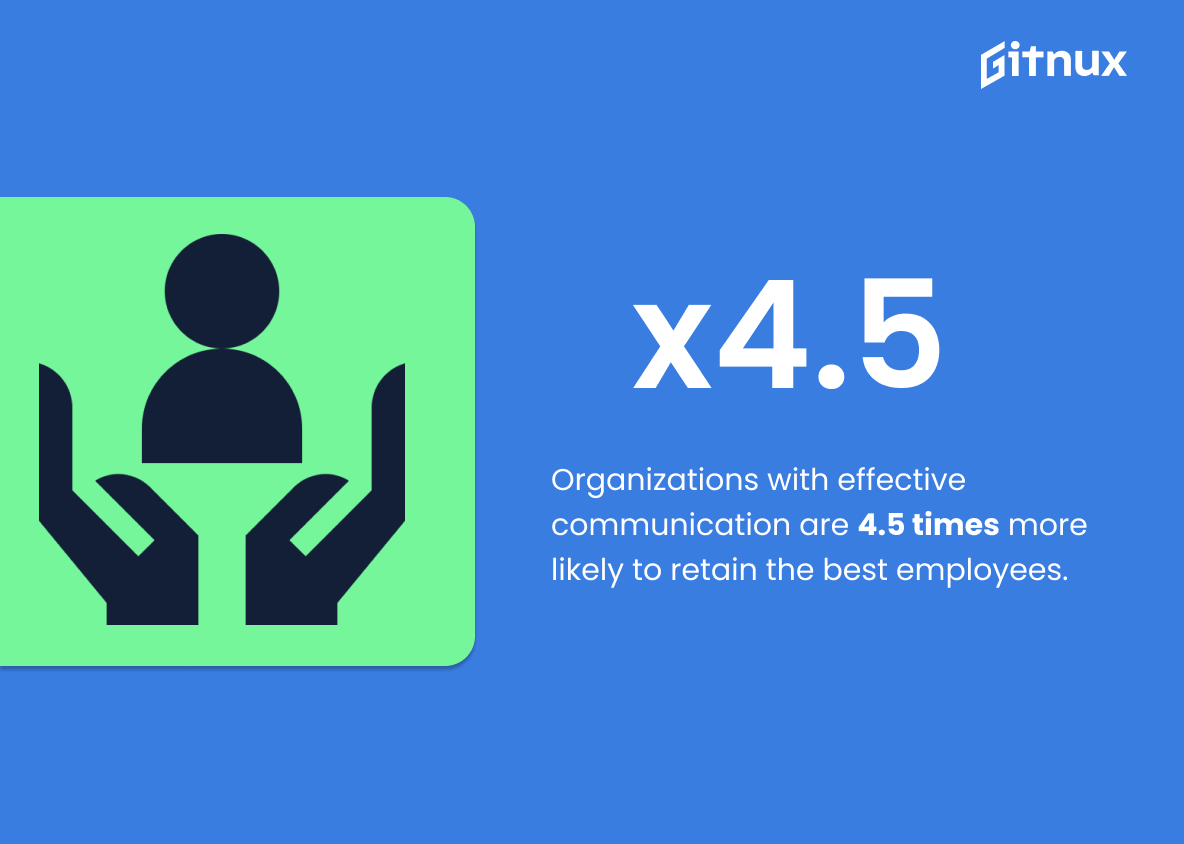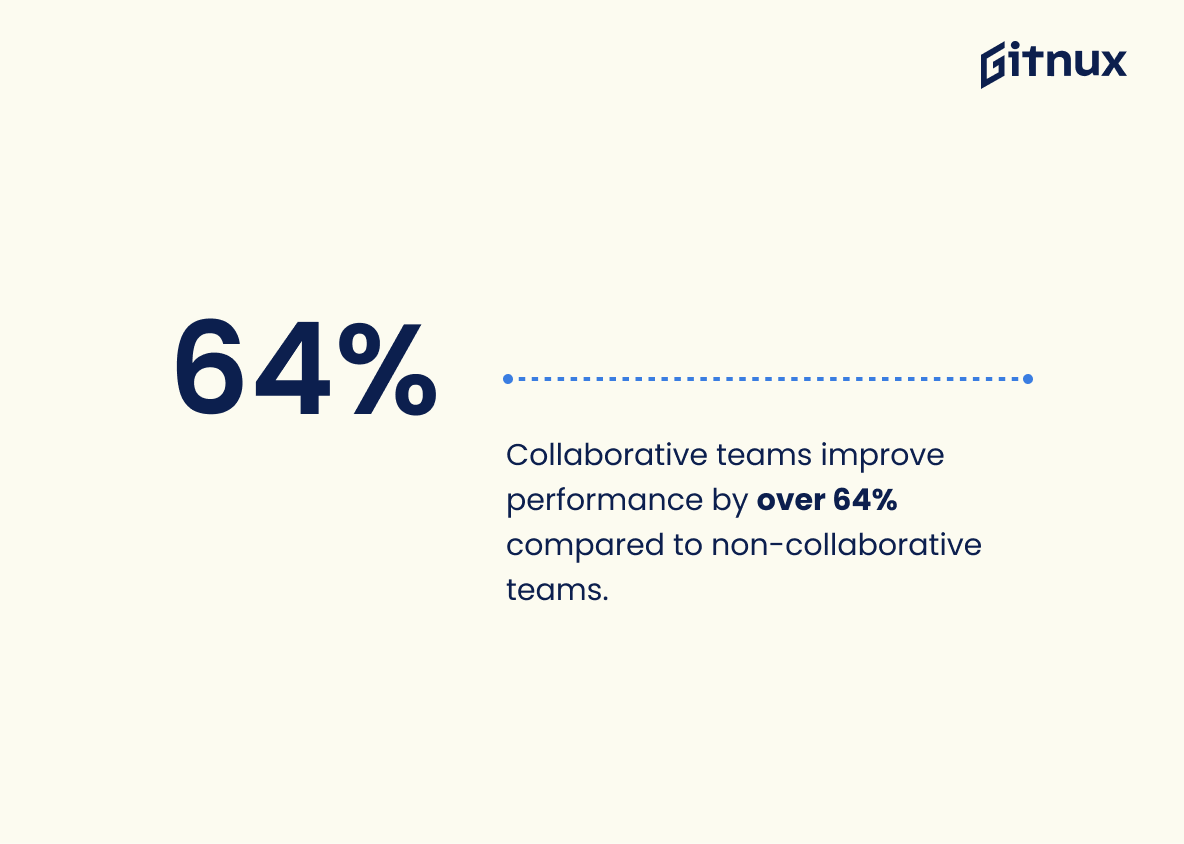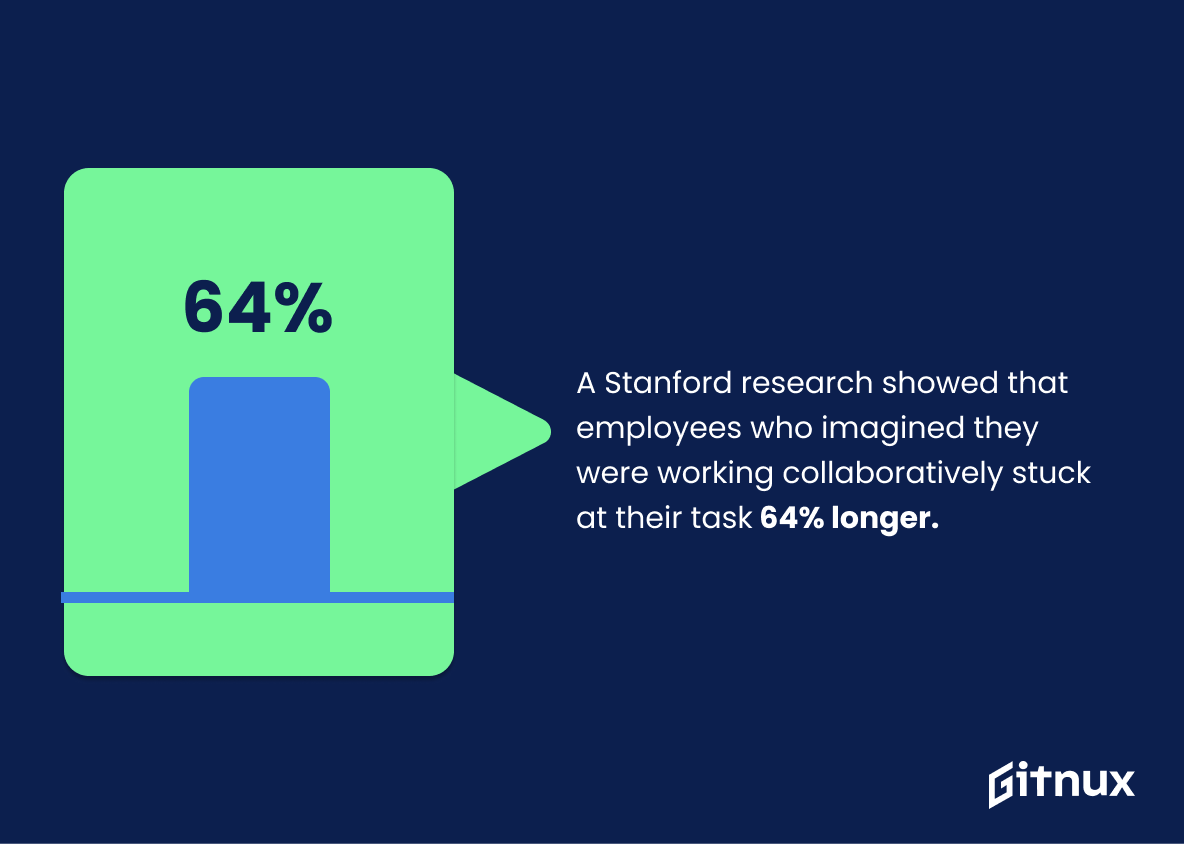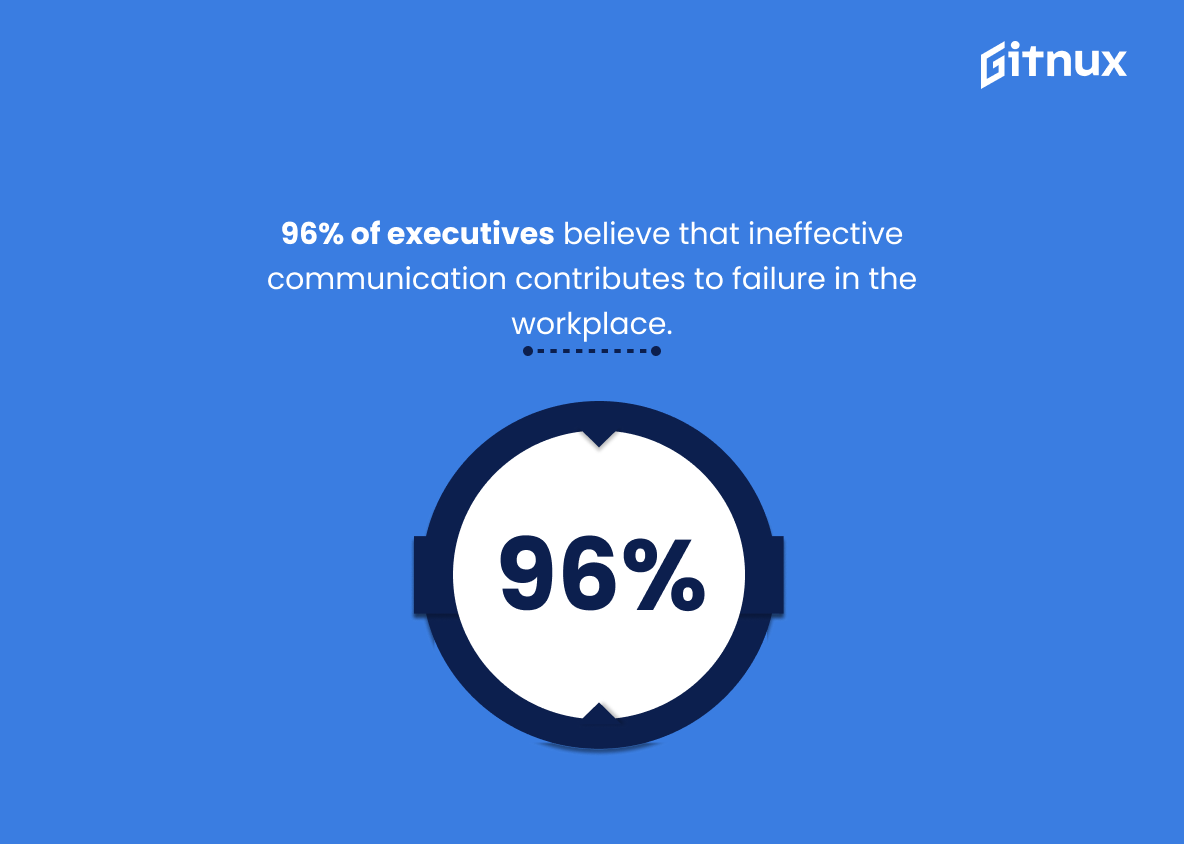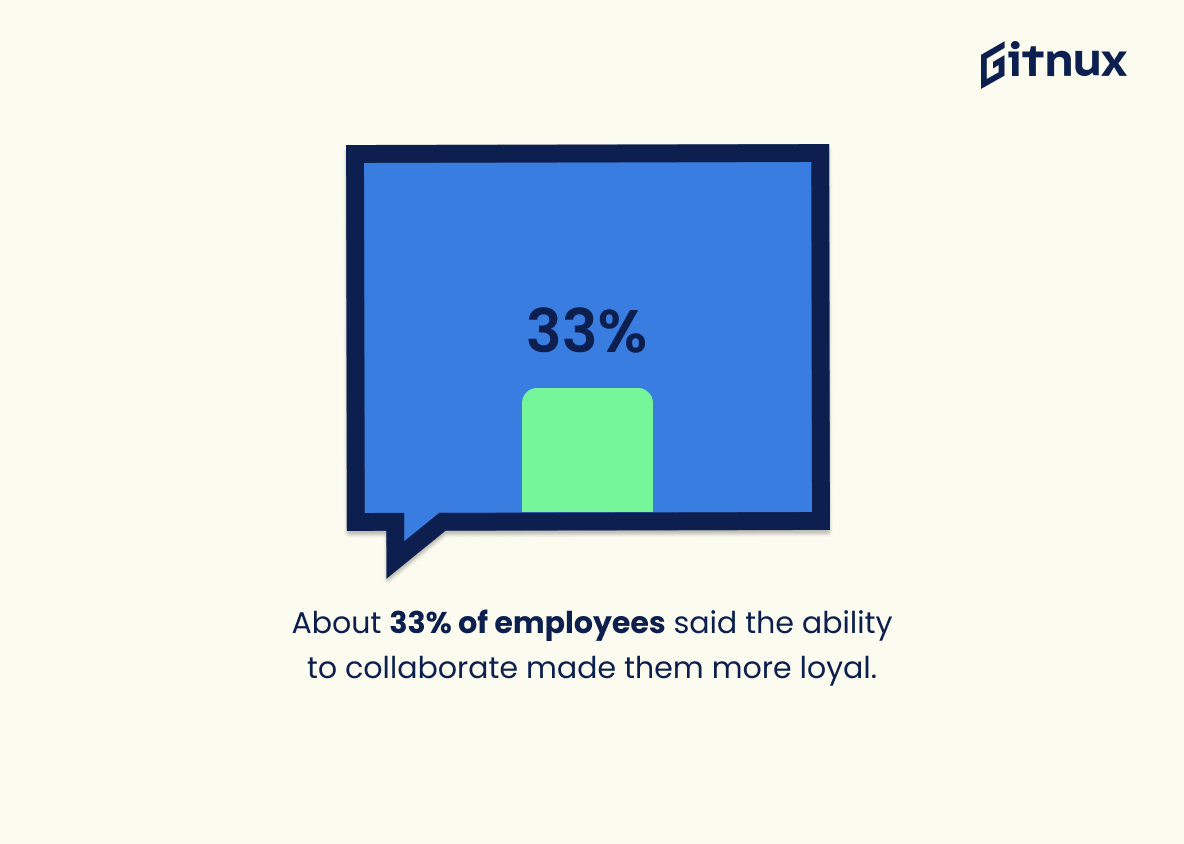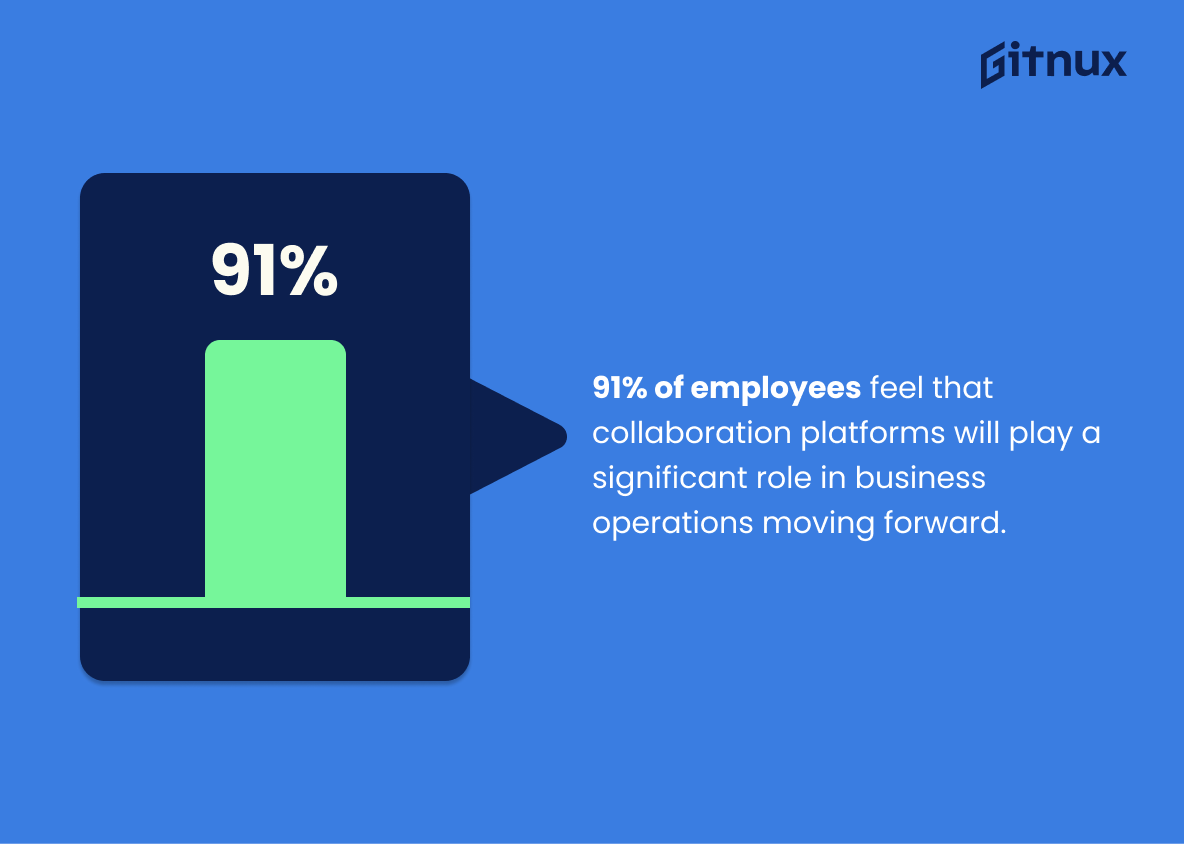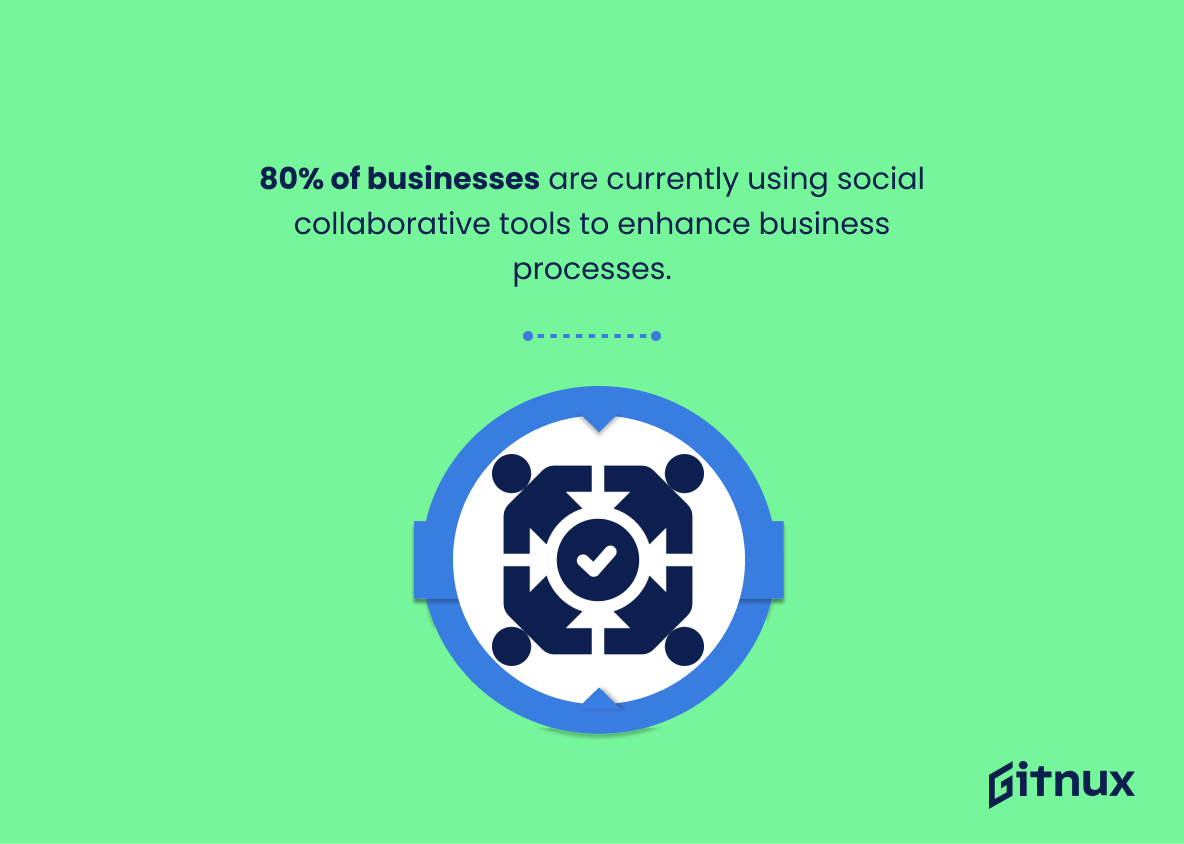Step into any successful business, and you’ll find one underlying thread that holds it all together – collaboration. This invaluable element serves as the lifeblood of innovative ideas, smooth workflows, and increased productivity. However, the essence of team collaboration is not just a vague concept; it is strongly underpinned by hard facts and compelling statistics that prove its importance. In this blog post, we delve deep into the intriguing realm of workplace collaboration statistics, demystifying how fostering a cooperative environment dramatically influences a company’s efficiency, creativity, and bottom line.
The Latest Workplace Collaboration Statistics Unveiled
97% of employees and executives believe lack of alignment within a team impacts the outcome of a task or project.
Undoubtedly, the dynamism of this statistic underscores a pivotal truth in the realm of workplace collaboration. An astounding 97% of employees and executives identify misalignment within a team as a roadblock to the successful completion of a task or project. This paints a telling picture for readers; when interdepartmental synergy breaks down, so does overall productivity, acting almost as a domino effect. As part of this dense fabric of collaborative work environments, cohesion, mutual understanding, and clear communication are stitched together to yield robust team performance. Any fraying in this fabric – alignment hiccups – leaves the entire team vulnerable to underperformance. Hence, this statistic doesn’t merely survive as a somber motto of caution, but thrives as an alert bugle, heralding the importance of collaboration in workplaces.
Businesses that promote collaborative working are 5 times more likely to be high performing.
Illuminating the compelling nature of this statistic, it serves as a lighthouse for businesses navigating the turbulent waters of productivity. Here, business owners can functionally see the power that lies in adopting a pro collaborative work culture. The stark reality: Businesses encouraging collaborative work have a staggering five-fold probability of soaring into the realms of high performance. This statistic is a vibrant, illustrious masterpiece painted with the colors of cooperation, teamwork, and success in the canvas of Workplace Collaboration Statistics. It’s not merely numbers, but a strong narrative of how unity in action can quintuple a business’ chances to outshine its competitors.
Over 37% of employee time is spent in meetings, highlighting the importance of collaboration in the workplace.
By splashing the intriguing fact that over 37% of employee time is poured into meetings, we simmer upon the potent role of collaboration in the workspace. This underlines how considerable chunks of the corporate clock are dedicated to synergistic endeavor – a nuance of modern office culture unwrapped through this statistic.
Delving into the heart of workplace collaboration statistics in this blog post, we beguile readers to ponder: are meetings simply a ritual, or is the fabric of productivity and innovation interwoven with them? This lens on how employees’ time is commandeered, indeed, fuels a deeper understanding of collaboration as not just a buzzword, but a driver of team dynamics, project progression, and ultimately, enterprise success.
Over 60% of remote employees have never had a team-building session, affecting collaboration.
Diving into the realm of Workplace Collaboration Statistics, it’s intriguing to give spotlight to a particular statistic that quite dramatically, yet subtly, changes the terrain of workplace dynamics. The spotlight is on the fact that over 60% of remote employees have never engaged in a team-building session. Taking this into account radically shifts our understanding of teleworking, where emphasis on interpersonal connection and team cohesion often seems to be set aside.
The essence of this statistic echoes throughout the discussion on collaboration. It alerts us to the underlying challenges remote workers may experience, potentially leading to less effective collaboration due to the lack of team-building activities. Without these crucial interactions, assembling a solid team bond can be tough.
Moreover, in the grand scheme of collaboration at the workplace, it introduces the need to redesign team building in a remote context, highlighting the importance of innovative methods to foster a collaborative environment despite geographical barriers. Hence, this statistic not just impacts our understanding of remote work, but it spins the discussion on the path towards effective solutions for enhanced collaboration in a remote setting. It underscores the question: ‘How do we change these numbers and increase collaboration among remote employees?’ thus paving the way for strategic solutions for improved remote workplace collaboration.
86% of employees and executives cite lack of collaboration for workplace failures.
In the intriguing world of workplace dynamics, this statistic offers an eye-opening revelation: 86% of employees and executives blame insufficient collaboration for workplace failures. This number is more than just a fun fact or figure to throw around. It’s an alarm bell – a stark wake-up call for modern organizations underscoring the critical importance of collaboration. It infuses the blog post with a compelling urgency, highlighting the extent to which lack of teamwork can lead to downfall. Indeed, this statistic stands tall as the beating heart of our discussion, embodying the essence of our exploration into the profound role that collaboration plays in ensuring organizational success. So, in each reference to this percentage, let us remember its magnitude, its relevance, and above all, its silent plea for improved collaboration in workspaces worldwide.
Organizations with effective communication are 4.5 times more likely to retain the best employees.
In painting a vivid picture of the empowering role of communication in a collaborative workspace, this statistic serves as a vibrant brushstroke. It underscores that robust and effective communication acts as a golden handcuff, making it 4.5 times more probable for companies to hold onto their superlative performers. This compelling datum radiates influence on workplace collaboration, implying that stronger communication translates into tighter team bonds and higher employee satisfaction. Ultimately, this realization could wake up the corporate world to the opportunities awaiting in the landscape of better communication – a game where they could score the winning goal of retaining top talent.
About 29% of baby boomers prefer working in their office as opposed to collaborating with others, compared to only 12% of Gen Z workers.
The aforementioned statistic paints a vivid portrait of the generational divides that exist within the realm of workplace preferences. Notably, it demonstrates a marked lean among baby boomers towards solitary work environment in stark contrast to their Gen Z counterparts.
This divergence is not merely factual trivia; rather, it serves as a critical beacon in navigating the dynamics of workplace collaboration. Inherent in this statistic is an acknowledgment of varying collaboration styles across different generations, a reality that reinforces the importance of cultivating a flexible, inclusive workspace.
As such, work cultures that can harmoniously integrate these differences will likely see a boost in productivity and worker satisfaction. Ignoring these preferences could, on the other hand, breed discord and lower efficiency levels. The crux here is leveraging this knowledge to foster a more balanced, efficient and collaborative work environment for all generational cohorts.
Teams that focus on collaborative practices were shown to improve their performance by over 64% in comparison to those teams who don’t collaborate effectively.
Immersing ourselves into the depths of this impressive statistic, we can uncover the profound significance it carries in our discourse on workplace collaboration statistics. It’s like wielding a torch that sheds light on the undeniable value of team cooperation. Isn’t it astounding to realize that a deep focus on collaborative practices can enhance team performance by a whopping 64% when compared to their less collaborative counterparts?
Bear in mind, an average increase of 64% is no small feat in any context, let alone in a business environment where every second counts, every penny matters, and every improvement can potentially translate into significant financial growth. Imagine the potential leap in efficiency, productivity, and ultimately, profitability that can be achieved if more teams placed a focused emphasis on collaboration.
The statistic becomes even more eye-opening when we consider it in light of the current competitive business landscape. In an era where innovation is king and reaction time to market changes can mean the difference between success and failure, enhancing team performance by over half through effective collaboration is a revelation that cannot be overlooked.
To add to this, in the realm of employee satisfaction and team morale – both critical factors in employee retention and performance – collaboration has been continually shown to boost these elements, leading to a more harmonious and productive workspace.
Taken together, this statistic elevates itself from mere figures to a compelling narrative, demonstrating the power of collaboration in a tangible, quantifiable manner. It is an irreplaceable cornerstone in the discourse of workplace collaboration statistics, shaping how we understand and emphasize the importance of team collaboration in our working environment today.
A Stanford research showed that employees who imagined they were working collaboratively stuck at their task 64% longer.
Drawing from this intriguing piece of Stanford research, we can envision an amplified panorama of workplace productivity. This statistic highlights how the mere perception of collaborative work can significantly extend an employee’s dedication to a task by a staggering 64%.
When woven into an enlightening blog post on Workplace Collaboration Statistics, this statistic can shed light on a whole new dimension to boosting employee efficiency. It underscores the potential of harnessing the power of collective thought, not just factually, but also psychologically.
This revelation turns the spotlight on the concept of an ‘imagined collaboration’, prompting businesses to consider the implementation of team-oriented schemas, which could potentially lead to an astounding increase in productivity. It invites readers to immerse themselves in the limitless possibilities collaboration could introduce on a workplace level.
In essence, it’s an illustration of how the human psyche responds to the idea of shared responsibility and camaraderie, and how it could be a game-changer in increasing the longevity and quality of their work output.
96% of executives believe that ineffective communication contributes to failure in the workplace.
Diving deep into the realm of Workplace Collaboration Statistics, it’s noteworthy to illuminate on a powerful figure that stands distinctly – a staggering 96% of executives opine that ineffective communication serves as a stumbling block, intricately weaving the tapestry of failure in the landscape of the workplace. Now, imagine the magnitude and the ripple effect this has in a work environment, essentially driving a wedge between employees impacting their performance and overall productivity.
In the grand schema of collaboration in the workplace, communication is not just a wheel in the cog, but a linchpin that holds the machine together. When communication falters, the tug of war between missions, visions, and goals begins, sweeping the workplace harmony under the rug.
Ponder upon this: an executive, a leader in driving growth, heavily points to ineffective communication as a contributing factor to failure. This creates an alarming need for organizations to re-examine their communication strategies and reinvent them if necessary to foster a culture of seamless collaborations, thereby bringing our blog’s pivotal focus on Workplace Collaboration Statistics into sharper relief.
70% of business transformation efforts fail due to lack of engagement and collaboration.
An enthralling piece of information that we should firmly clutch is that a whopping 70% of business transformation initiatives crash and burn, not because of insufficient funding or poor planning, but due to a lack of engagement and collaboration. Now imagine a business world without collaboration. Colossal, isn’t it?
In a blog post about Workplace Collaboration Statistics, this tidbit of information serves as a powerful magnifying glass, highlighting the critical role collaboration plays in the success of any enterprise. It’s not just another buzzword; it is, in fact, the heart that pumps lifeblood into the veins of any organization, especially during times of change and transformation.
This statistic is a silent screamer urging businesses to realize that the engine of effective organizational transformation is oiled by engagement and collaboration. When individuals collaborate, they breed ideas, innovate, and collectively contribute to mutual organizational goals resulting in successful transformations. Therefore, the absence of collaboration is akin to cutting the power source – there is movement but no progress.
This statistic sits like a crown atop the blog post, emphasizing why readers should care about workplace collaboration—not as an abstract concept, but as a golden key to successful business transformation. So, the next time you map out a transformation strategy, remember – collaboration isn’t a nice-to-have, it’s the master gear driving the success machinery.
About 33% of employees said the ability to collaborate made them more loyal.
Digging deep into the realm of Workplace Collaboration Statistics, the undeniable truth surfaces that roughly a third of employees are kindled with increased loyalty through the opportunity to collaborate. This gold nugget of data underscores the direct impact collaborative environments have on team allegiance. The symbiotic relationship here holds the potential to transform workplaces. Strengthening co-ordination among employees not only invigorates their sense of belonging, but also solidifies their commitment to the organization. Subsequently, this highlights the paramountcy of fostering collaboration in seeking larger workplace benefits including increased productivity, job satisfaction and employee retention.
Team collaboration software market is projected to hit $16.60 billion by 2025.
Foreseeing the dawn of a new era in workplace communication strategies, the impressive forecast for the team collaboration software market escalating to $16.60 billion by 2025 paints a vivid picture. This projection not only instills the vitality of digital teamwork tools, but also signals a transformative shift in workplace norms.
In a blog post revolving around Workplace Collaboration Statistics, this forecast acts as a reflection of the escalating reliance on software solutions to stoke the fires of team collaboration. It is an undeniable testament of how more and more businesses are pivoting toward technology to facilitate, streamline, and optimize team interaction and coordination.
Moreover, this anticipated growth rate lucidly illustrates the upward trajectory of investment in this sector. Hence, in the grand canvas of collaborative work statistics, it underscores the relentless migration towards digitization and the associated economic opportunities in the years ahead.
In essence, it serves as a compelling indicator of the emerging trends, industry growth, and the pivotal role of team collaboration software in sculpting the future workplace dynamics.
91% of employees feel that collaboration platforms will play a significant role in business operations moving forward.
Unveiling this statistic in the realm of Workplace Collaboration Statistics paints a vibrant picture of the future landscape of business operations. It creates an underpinning narrative highlighting the deep-seated belief within the vast majority of the modern workforce – a resounding 91% no less – that collaboration platforms are not mere trends but pivotal equipment in the shifting gears of business productivity. This dynamic datum opens the door to further discourse on how collaboration tools will facilitate team synergy and propel businesses forward in the evolving market. In this digital age where work configurations are always transforming, companies armed with these valuable insights will be strategically poised to navigate the dynamics of seamless remote work, improved communication, and enhanced project coordination.
80% of businesses are currently using social collaborative tools to enhance business processes.
In the fertile landscape of Workplace Collaboration, this nugget of statistical gold shines with particular significance: four in every five businesses are harnessing the power of social collaborative tools to elevate their processes. This vibrant trend is not only a testament to the growing embrace of these tools but also a vivid indicator of their effectiveness in driving success. Within this stat lays a compelling narrative for businesses that are still on the fence – an overwhelming majority of contemporaries are already reaping the benefits of collaboration in the digital realm. Essentially, not being on this coworking bandwagon could mean missing out on substantial productivity and innovation growth.
Conclusion
In light of the statistics uncovered, it’s clear to see that workplace collaboration is no longer a nice-to-have, but rather a fundamental necessity for any organization aiming for success. The numbers don’t lie – organizations that encourage and nurture collaboration see substantial improvements in performance, innovation, and employee satisfaction. If businesses hope to thrive in today’s highly competitive, interconnected world, they must start by leveraging the power of collaboration. Remember, collective intelligence significantly outweighs individual smartness. It’s high time organizations weave collaboration into the very fabric of their working culture. Only then can they fully harness its numerous benefits – paving the way for rosier industry statistics to follow.
References
0. – https://www.clearcompany.com
1. – https://www.www.glintinc.com
2. – https://www.www.forbes.com
3. – https://www.www.salesforce.com
4. – https://www.www.tinypulse.com
5. – https://www.ideas.repec.org
6. – https://www.fleep.io
7. – https://www.www.owllabs.com
8. – https://www.www.grandviewresearch.com
9. – https://www.www.computerweekly.com
10. – https://www.www.mckinsey.com
11. – https://www.www.atlassian.com
12. – https://www.www.globenewswire.com
13. – https://www.digitalmarketinginstitute.com
